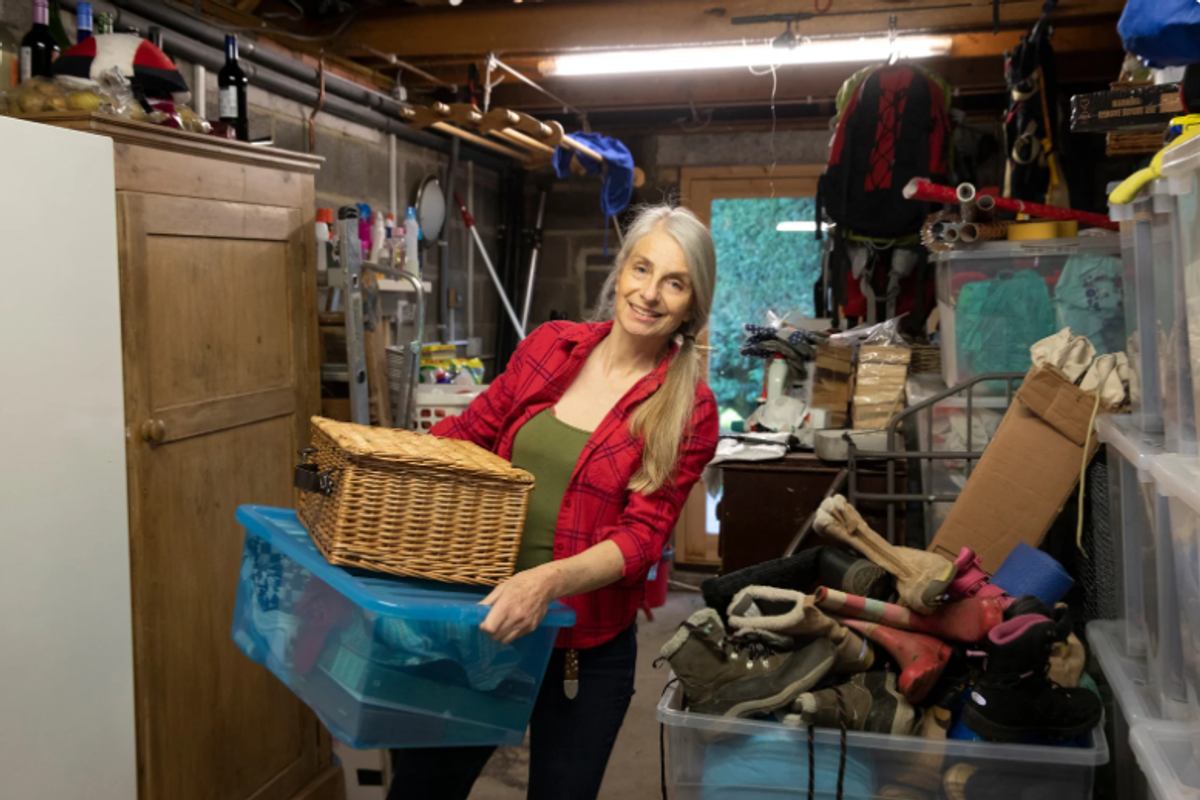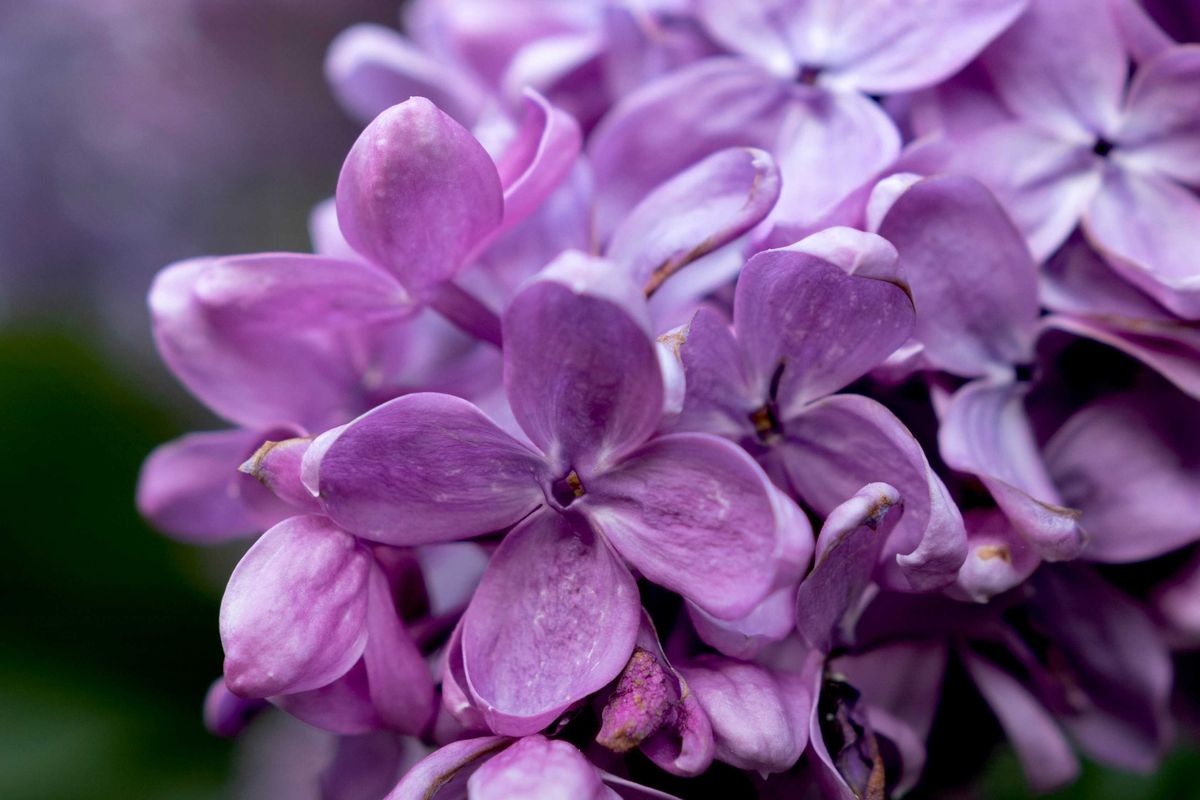7 of the best LGBTQ moments from TV last year.
How TV took the conversation way beyond marriage.
Do you remember when Edith Bunker got a job at Louise Jefferson's store?
It caused quite a stir in the fictional Bunker household.
You see, the cantankerous "All in the Family" main character, Archie, didn't want his wife to take the job offer. Not only because it came from his archnemesis George Jefferson but because he was afraid of what people would think of his white wife working in a black man's store.
Those were the days. Image via John S./YouTube.
"What are the neighbors going to say?" Archie asked. "I mean the white neighbors. ... You working at a colored store? What are they going to say?"
"Well," Edith replied with her trademark combination of wisdom and naïveté, "I guess they'll just say, 'Hi, Edith!'"
TV shows often provide a cross-section of American culture. They have a unique, often subtle way of tapping into the important discussions and issues of the day, from race relations to gender roles to LGBTQ rights.
In the first year since the landmark Supreme Court ruling on marriage equality in June 2015, some of America's most popular TV shows have brought LGBTQ characters, issues, and discussions into our homes.
They've moved the conversation forward and helped ensure that LGBTQ rights remain something we all think about, talk about, and care about.
Here are seven of the biggest and best moments for LGBTQ characters from TV in the 2015-2016 season:
1. "How to Get Away With Murder" revealed its main character to be bisexual.
When the hit ABC drama premiered for its second season back in September 2015, fans got a glimpse into the mysterious past of protagonist Annalise Keating (Viola Davis) — which included the revelation that she's bisexual.
Davis was the first African-American woman to win the Emmy for Outstanding Lead Actress in a Drama Series. Photo by Kevork Djansezian/Getty Images.
While the show is known for its twists and surprises, the moment wasn't played for shock. It simply added a new layer to the character. Shonda Rhimes, who created the show, even said that she's not trying to shock people. Just the opposite, in fact.
"I’m normalizing TV," said Rhimes at an awards gala. "I am making TV look like the world looks. Women, people of color, LGBTQ people, equal way more than 50 percent of the population. Which means it ain’t out of the ordinary."
2. On "Empire," Jamal came out of the closet in a big, bold way.
The prodigal-son character Jamal Lyon (Jussie Smollett) has had it pretty rough. When he was a child, his father literally threw him in the garbage for acting effeminate. While his mother was incarcerated, he was abused and told by his disapproving dad to "act like a man."
Which is why it was a pretty huge deal when Jamal came out of the closet, not hiding from his father, but right in front of him. On a stage. In a white suit. In song. At a massive party. Yeah.
Image via Empire/YouTube.
Even though Jamal knew his father would disapprove, he chose to publicly and epically embrace who he is.
Since queer men of color are hugely underrepresented on TV and in media, Jamal's primetime showstopper was an even bigger deal. Sure, not everyone can come out via a dazzling musical number, but it still shows that you should embrace who you are no matter what anyone says.
And why not go big while you do it?
3. "The Fosters" aired the youngest same-sex kiss in TV history.
"The Fosters," which is one of the most progressive and forward-thinking TV shows on air right now, took LGBTQ visibility to new heights when 13-year-old will-they-won't-they couple Connor (Gavin MacIntosh) and Jude (Hayden Byerly) shared their first on-screen kiss.
What's the big deal? Well just that it was the youngest same-sex kiss in TV history.
Image via The Nomad/YouTube.
Crushes and first kisses are a pretty huge part of everyone's young life, and "The Fosters" did an amazing thing by helping to normalize young same-sex romance.
The kiss was historic, but it was also just as heartwarming and sweet as any other first love story. Which is probably why the #Jonner fanbase was freaking the f**k out. (In a good way).
4. Over on Cartoon Network, "Steven Universe" featured a lesbian couple.
"Steven Universe" is a groundbreaking, envelope-pushing kids show about a young kid named Steven who protects the universe with gems.
In July 2015, it was revealed that Garnet, one of the show's side characters, is actually a fusion of two other characters — Ruby and Sapphire. After that reveal, series producer Ian Jones-Quarterly later confirmed that Ruby and Sapphire are a lesbian couple.
An adorable lesbian couple.
GIF from "Steven Universe."
"TV and movie representation matters," says Edward Schiappa, a communications professor at the University of Minnesota. According to The New York Times, Schiappa performed five studies that all showed that the presence of gay characters on TV decreases prejudice. "These attitude changes are not huge — they don’t change bigots into saints. But they can snowball." Schiappa said.
For kids watching cartoons, seeing LGBTQ characters can help dissolve some societal prejudices as early as possible.
5. "Crazy Ex-Girlfriend" shined a big spotlight on bisexuality and the problem of bi-erasure.
While there have been increasing numbers of gay and lesbian characters, bisexuality is still underrepresented on TV and is often misrepresented to the point of being harmful. According to GLAAD, only 18 bisexual men appeared on television in 2015, and many of them fell into "dangerous stereotypes about bisexual people."
Some of those harmful stereotypes include the idea that bisexual people are somehow more sexually promiscuous than others or that they simply haven't made up their minds about their sexuality yet and are really just gay or lesbian.
"Crazy Ex-Girlfriend," a musical show about a New York lawyer who follows an old flame to California, decided to address all those stereotypes head-on when divorced-father-and-lawyer character Darryl Whitefeather (Pete Gardner) realized, later in life, that he was bi.
Image via The CW/YouTube.
He announced this to his colleagues in a musical number called "Getting Bi" which was simultaneously a jazzy smackdown of those who don't think that bisexuality is a real thing and a proud celebration of his sexual identity.
While bisexuality is still often misrepresented, it was awesome to see it addressed in such a big way.
6. Scott Turner Schofield became the first transgender man to star in a daytime soap opera.
It's hard to get more "Americana" than a daytime soap opera. While most shows come and go, soap operas like "The Bold and the Beautiful" remain, providing an ever-evolving canvas of characters and storylines that reflect the times.
When Scott Turner Schofield joined the cast of "The Bold and the Beautiful" in April 2015, he became the first openly transgender actor to ever play a major role on a soap.
Photo by Jason Kempin/Getty Images for GLAAD.
His character, Nick, is a mentor and friend of another transgender character on the show played by actress Karla Mosley.
"I am grateful to be able to help uplift and honor transgender people in this moment. I had such help from my communities, becoming me," Schofield said in a Facebook post.
With millions of people tuning in to soap operas, Schofield's casting does a lot for trans visibility — something that the trans community continues to fight for.
7. "How to Get Away With Murder" featured an open and frank discussion about HIV and PrEP.
There's a reason "How to Get Away With Murder" is featured on this list twice. The show has done, and continues to do, a lot for LGBTQ visibility and representation.
One of the show's recent plot turns involved Oliver (Conrad Ricamora) revealing to his boyfriend Connor (Jack Falahee) that he is HIV positive. As that storyline played out, the two discussed options for continuing their relationship despite the diagnosis. Naturally, the conversation turned to the HIV prevention drug PrEP — which many couples use to stay safe.
Jack Falahee and Conrad Ricamora at the Point Honors Gala. Photo by Astrid Stawiarz/Getty Images for Point Foundation.
HIV overwhelmingly affects members of the LGBTQ community, particularly gay and bisexual men who account for two-thirds of all new diagnoses.
Safety and HIV prevention is a real concern but one that is often shrouded in secrecy and stigma. For a primetime TV show to openly discuss it is a huge win for public health.
All of these moments have contributed to something greater than just entertainment.
They've helped the LGBTQ community be seen and heard in new ways. They've pushed our often stubborn and slow-moving country a little further toward equal rights and made the discussion of LGBTQ equality about more than just marriage.
There's still a lot of work to be done. The LGBTQ community is still subject to prejudice, hate, and violence. After the shooting in Orlando, just one year after the Supreme Court made marriage equality the law of the land, you probably don't need to be reminded of that.
But the more we embrace love — in our lives, in our hearts, and even on our TV sets, the better the world gets.
Nothing can stop the march forward.






 Friends sharing a moment in the sunlit park.
Friends sharing a moment in the sunlit park. Feeling the stress: A young woman holds her head in frustration.
Feeling the stress: A young woman holds her head in frustration. Friends sharing a laugh over coffee at a cozy café.
Friends sharing a laugh over coffee at a cozy café.
 Close up of lilac flowers. Photo by
Close up of lilac flowers. Photo by